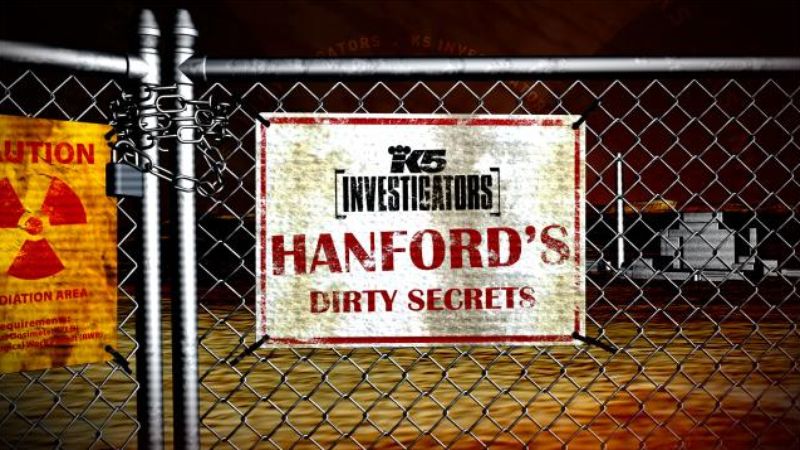At Hanford, Some of the nations dirtiest secrets not so secret
enformable.com
As you read this, roughly 56 million gallons of a highly radioactive stew — enough to fill dozens of Olympic-size swimming pools — are sitting in underground tanks at the Hanford nuclear site in Eastern Washington. Some of the toxic sludge is slowly seeping into the soil, and could contaminate the Columbia River if nothing is done to fix the leak.
A federal engineering review team found in late July that Bechtel‘s safety evaluation of key equipment at the plant at the Hanford site in Washington state was incomplete and that “the risks are more serious” than Bechtel acknowledged when it sought approval to continue with construction, the documents say.
Senior scientists at the site said in emails obtained by The Times that Bechtel’s designs for tanks and mixing equipment are flawed, representing such a massive risk that work should be stopped on that part of the construction project.
The revelations published this week shook the press from cost to cost after higher costs and more potential delays at Hanford were confirmed. Also, two Hanford workers filed suit as whistleblowers, claiming they were targeted for reprisals after raising safety concerns. The largest of the safety complaints deal with specifications for the process by which the waste would be mixed.
The whistleblowers say, as specified, it could result in dangerous gas concentrations as well as a settling of waste within the mixing vessels.
Walt Tamosaitis, one of those whistleblowers, estimates the plant will end up costing taxpayers $20 billion because too many questions remain unanswered about the plant’s overall design. He said his fear is that the plant, even after all that money, will not operate as it should.
The Hanford Site is a mostly decommissioned nuclear production complex on the Columbia River in the U.S. state of Washington, operated by the United States federal government.
The site has been known by many names, including Hanford Works, Hanford Engineer Works or HEW, Hanford Nuclear Reservation or HNR, and the Hanford Project. Established in 1943 as part of the Manhattan Project in the town of Hanford in south-central Washington, the site was home to the B Reactor, the first full-scale plutonium production reactor in the world.
Plutonium manufactured at the site was used in the first nuclear bomb, tested at the Trinity site, and in Fat Man, the bomb detonated over Nagasaki, Japan.
“The risk from the materials we are dealing with over there is simply too great (not to complete the plant),” Washington Gov. Chris Gregoire said in a recent interview with The Associated Press. “Here, we thought we were making such progress, and now to learn that, for reasons I don’t know, we’re at serious risk of missing more milestones is disappointing.”
Issues raised by the whistleblowers about the plant’s safety would be equally disconcerting, Gregoire said.
Roughly one-third of the federal government’s entire budget for nuclear cleanup — about $2 billion each year — goes to Hanford, and nearly a third of that goes to construction of the plant. Last month, U.S. Rep. Edward J. Markey, D-Mass., demanded that the Energy Department provide an accurate statement of costs and schedule for the facility, and answer questions pertaining to safety complaints.
Plutonium production at Hanford left behind a slew of waste and debris in trenches, buildings and underground tanks, making it one of the most challenging cleanup projects in the world.
The Hanford site represents two-thirds of the nation’s high-level radioactive waste by volume. Today, Hanford is the most contaminated nuclear site in the United States. Hanford also hosts a commercial nuclear power plant, the Columbia Generating Station, and various centers for scientific research and development, such as the Pacific Northwest National Laboratory and the LIGO Hanford Observatory.
A huge volume of water from the Columbia River was required to dissipate the heat produced by Hanford’s nuclear reactors. From 1944 to 1971, pump systems drew cooling water from the river and, after treating this water for use by the reactors, returned it to the river.
Before being released back into the river, the used water was held in large tanks known as retention basins for up to six hours. Longer-lived isotopes were not affected by this retention, and several terabecquerels entered the river every day. These releases were kept secret by the federal government.
Radiation was later measured downstream as far west as the Washington and Oregon coasts.
Steve Lewis was an electrician at Hanford and had been exposed to a blast of ammonia vapor from Hanford’s underground “tank farms.” Down on these farms during the Cold War, as federal workers churned out plutonium for the U.S. nuclear arsenal, they buried the largest haul of high-level nuclear waste in the Western Hemisphere.
Lewis is part of another generation of Hanford workers that for more than a decade has been mopping up the festering mess.
His vapor exposure, which occurred in January 2002, flushed his face red and burned his lungs.
Four months later, he had headaches and nosebleeds and was gagging on phlegm.
He went to see Larry Smick, Hanford’s acting medical director, who diagnosed Lewis’s complaint as a preexisting condition: “Allergic disease likely making him more sensitive to irritant vapors at work,” according to the doctor’s handwritten notes.
Lewis was incredulous. He had never had allergies. He said he tried repeatedly during the exam to get the doctor to talk about chemical exposure out at the tank farms, but Smick would only talk allergies.
“Quite honestly, that is when my bubble popped,” said Lewis, 51. “I could live with injury because these things do happen. I was not an angry employee up until they started trying to convince me that I hadn’t been injured.”
Source: LA Times
Source: Boston.com
Source: SeattleWeekly
Source: Spewing Forth
http://enformable.com/2011/12/at-hanford-some-of-the-nations-dirtiest-secrets-not-so-secret/

